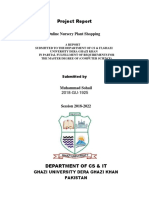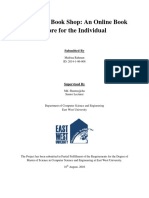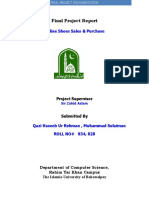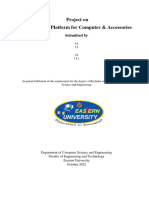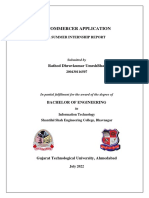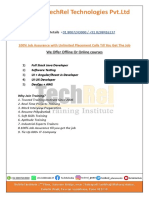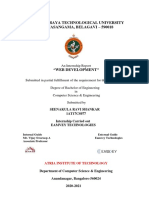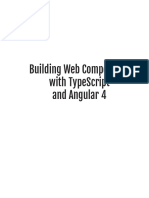0% found this document useful (0 votes)
7 views31 pagesSummer Training Project Report. Mitesh
The Summer Training Project Report details Mitesh Uniyal's development of an E-Commerce Product Catalog Website at Codec Technologies as part of his Bachelor of Computer Applications degree. The project focused on creating a responsive and user-friendly platform for browsing sneakers, utilizing technologies like HTML, CSS, Tailwind CSS, and React. The report includes sections on problem formulation, system analysis, design, testing methodologies, and concludes with the successful implementation and deployment of the website.
Uploaded by
vishuohlan04Copyright
© © All Rights Reserved
We take content rights seriously. If you suspect this is your content, claim it here.
Available Formats
Download as PDF, TXT or read online on Scribd
0% found this document useful (0 votes)
7 views31 pagesSummer Training Project Report. Mitesh
The Summer Training Project Report details Mitesh Uniyal's development of an E-Commerce Product Catalog Website at Codec Technologies as part of his Bachelor of Computer Applications degree. The project focused on creating a responsive and user-friendly platform for browsing sneakers, utilizing technologies like HTML, CSS, Tailwind CSS, and React. The report includes sections on problem formulation, system analysis, design, testing methodologies, and concludes with the successful implementation and deployment of the website.
Uploaded by
vishuohlan04Copyright
© © All Rights Reserved
We take content rights seriously. If you suspect this is your content, claim it here.
Available Formats
Download as PDF, TXT or read online on Scribd
/ 31





















